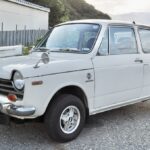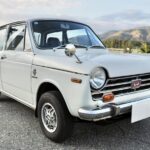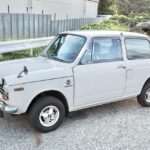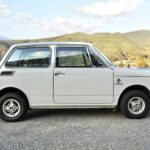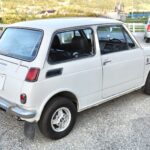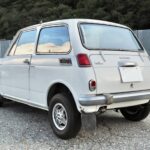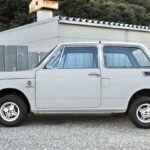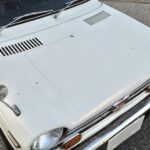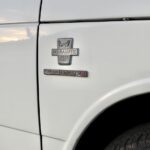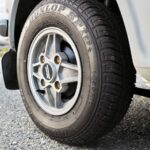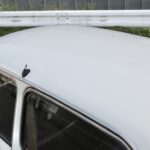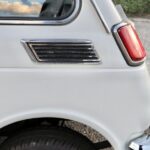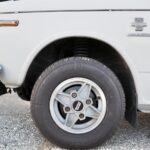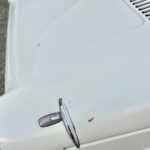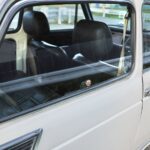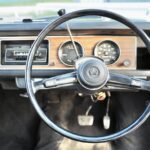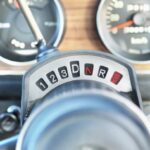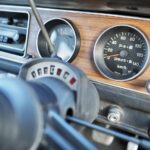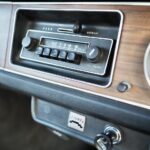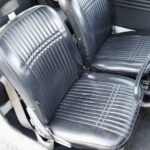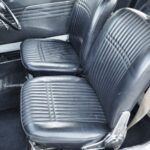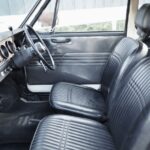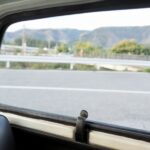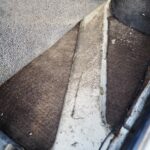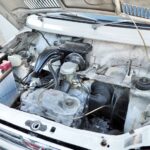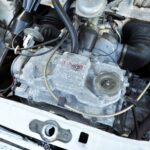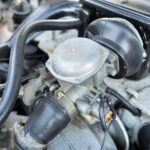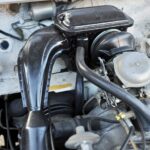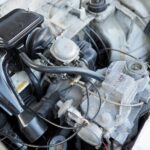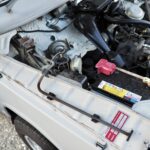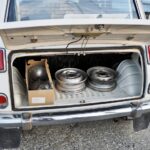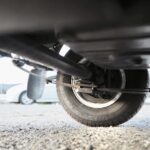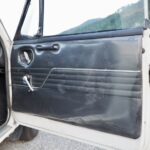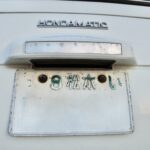TOP>Stock List>The 1968 Honda N360AT Super Deluxe
1968model
Honda N360AT Super Deluxe
↑↑↑Please watch the archived video above with audio if possible...
A 1968 Honda N360AT Super Deluxe with the HondaMatic transmission, practically a one-owner vehicle with only 28,251 km on the odometer, has survived in an unrestored, fully original condition, retaining its single-number plate...! This car, which transformed the history of Japanese automobiles, still turns heads today...!
On the day of the interview, the owner drove the fully original 1968 Honda N360AT to the photo location, navigating through the historic streets of Matsumoto. Following behind in the equipment vehicle, I witnessed an unforgettable scene: people along the roadside turned to gaze at the N360AT, their faces instantly lighting up with smiles. This car, a masterpiece that encapsulated the spirit of the late Soichiro Honda and forever changed Japan’s automotive history, remains a timeless wonder. Even more than half a century after its debut, this exceptional “N”—a true vehicle for the people—continues to bring joy to everyone who encounters it.
A single-number plate and an incredible 28,251 km of actual mileage… This exceptional N360AT, with its fully original exterior and interior, has somehow survived for over half a century in this remarkable condition. What history has allowed this car to endure so perfectly through the decades?
Eager to learn more, I immediately asked the owner…
The current owner’s father—a close family friend—was a respected obstetrician from a long line of doctors. Among the cars he owned, he had purchased this Honda N360AT brand new in 1968, using it exclusively for house calls along the narrow lanes of the old castle town, at all hours of the day and night. After retiring and later passing away, the car remained under the care of his family for about a decade. Most of his other cars were sold off quickly, but for reasons unknown, this one remained sheltered in a garage, undisturbed.
Thanks to this sheltered storage, the N360AT retained its excellent exterior condition, although the tires had gone flat, and the engine was non-functional. Feeling a strong affinity for this classic car, a hallmark of the My Car Boom of Japan’s economic miracle, the current owner took on the challenge, acquiring the car and dedicating three years to restoring it to a roadworthy state.
When the restoration began, the engine was sound, but issues were quickly discovered: clogged fuel hoses, carburetor trouble, and seized brakes, confirmed by a local workshop. Thankfully, the fuel tank had been stored empty, so it hadn’t corroded. However, the fuel hoses, carburetor, and drum brakes all needed overhauls. The most challenging repairs were replacing the carburetor’s accelerator pump diaphragm and finding a new wheel cylinder for the brakes. After much searching, the parts were found and installed, with the entire process—from sourcing to repairs—spanning three years before the vehicle finally passed inspection.
As seen in the final photos, the spare tire is missing from the engine bay. There are two steel wheels in the rear trunk, borrowed from a Honda Z of the same era, which have a different rim width and offset. These wheels fit snugly within the front fenders to meet inspection requirements, as the N360’s original design had the front tires slightly extending past the fenders. While some inspection offices accept the original setup, these substitute wheels ensure the car can pass if needed.
Now riding on new Dunlop SP10 10-inch tires, mounted on period-correct Hayashi Racing aluminum wheels, the revived 1968 Honda N360AT Super Deluxe drives with the distinctive sound of its air-cooled, two-cylinder SOHC engine. Smooth acceleration, powered by Honda’s first automatic transmission, the HondaMatic, brings joy as it glides through city streets. With about 40 horsepower, it struggles a bit on steep hills, but in the city, it runs seamlessly, offering the charm of a vintage car. The original AM radio adds an authentic atmosphere for a leisurely drive.
A polish with linseed oil brings out the best in its patina, preserving its original charm. There’s some rust on the engine hood, but the original paint still shines. Remarkably, the driver’s door panel retains its factory protective vinyl, while the right rear window weather strip has a minor flaw. The seats, however, are in pristine condition, bringing a tear to the eye. The faux wood trim evokes a walnut finish like British cars of the era, with a circular speedometer reading 28,251 km, a classic fuel gauge, and an original AM radio that still works perfectly. The unblemished, thick crash pad and original steering wheel remain intact, exuding an authentic period atmosphere that is genuinely moving.
While rust spots are visible on the front grille, chrome bumper, and behind the wheel arches, they add to the car’s patina, enhancing its original charm. The undercarriage, floor, and trunk floor are remarkably free from corrosion.
This exceptional survivor, preserved by an incredible series of events, remains a piece of Japanese automotive history. The current owner is determined to preserve it for future generations. For more on the history of the Honda N360, please read on.

Adding a captivating classic that shaped Japan's automotive history to your lifestyle… Here's what you should know about the Honda N360’s story.
The post-war economic recovery and the high-growth era of mid-Showa Japan were deeply intertwined with automotive development—a phenomenon seen worldwide. In Italy, cars like the Fiat Topolino and Cinquecento carried the hopes of a generation, racing across the country. In Britain, the Mini Cooper did the same, eventually transcending its time to become a cultural icon. As nations prospered, the dreams and passions of young people fueled unique automotive cultures, creating legendary cars that would stand the test of time.
In Japan, one car that epitomized this era of transformation was undoubtedly the Honda N360. Embodying the spirit of Soichiro Honda himself, it bore the initial “N” for *norimono*, or “vehicle,” representing a new era of Japanese motoring. Before the N360’s release, the kei car market was modest, with monthly sales of fewer than 10,000 units. However, after the N360 launched in March 1967, the market quickly surged. By April, monthly sales hit 16,000, climbing to 17,000 in May and steadily surpassing 18,000. Focusing on the N360 alone, it debuted with a bang: 5,570 units sold in its first month, instantly positioning it as the industry leader. By June 1968, it had already reached 22,500 pre-orders, and in less than two years, by April 1969, cumulative registrations surpassed an unprecedented 500,000 units. When including exports, the model had amassed one million units by September 1970, capturing the hearts of people of all ages in a surge of popularity.
Lovingly nicknamed “N-Koro” by the public, Honda’s first mass-produced mobility solution combined motorcycle-derived engineering, featuring a high-performance, air-cooled parallel-twin engine based on the Dream CB450. Its small tires at each corner, coupled with front-wheel drive, created ample space for four adults. The N360 targeted families with these five key features:
- **Affordability**: This was paramount.
- **Ease of driving**: It needed to be approachable for all.
- **Power and speed**: Balanced to enhance performance.
- **Highway safety**: Equipped to handle high-speed driving safely.
- **Compact design**: Yet comfortable for long-distance journeys.
Above all, Soichiro Honda instilled in it a dedication to evoke joy in the driver—a value that permeated every aspect of its design.
This passion for craftsmanship, born from a founder’s guiding principles, was powerful then and remains so today. As half a century has passed and the world transitions to renewable energy-powered mobility, the N360 continues to remind us of a time when driving was filled with inspiration. Now, perhaps more than ever, it conveys an enduring sense of “new amazement” to future generations.
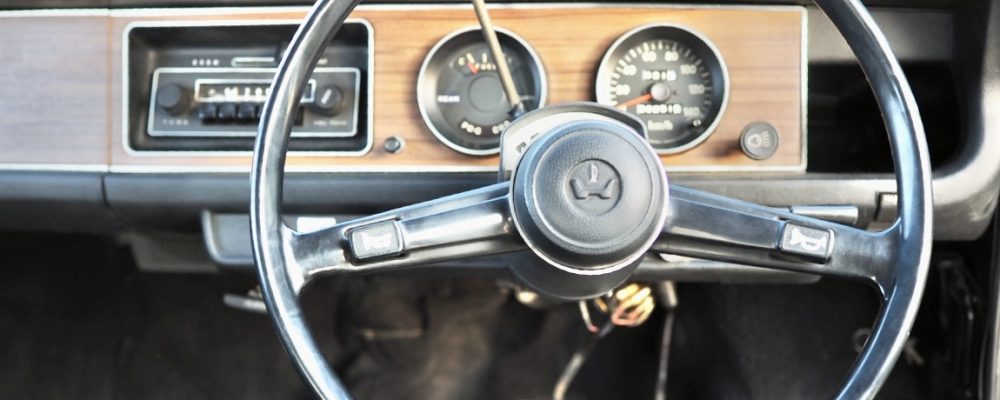
1968 Honda N360AT Super Deluxe – Postscript
As the sun set beautifully over the Northern Alps, we filmed a drive with the owner at the wheel of the 1968 Honda N360AT Super Deluxe. The car’s 354cc engine, emitting a classic high-revving air-cooled sound reminiscent of a vintage motorcycle, came to life. Honda’s renowned high-rev engine, with its 62.5 x 57.8mm bore and stroke, generates 31ps at 8,500rpm, propelling the lightweight 570kg body with a delightful, relaxed cadence unique to this automatic model. Riding in the passenger seat, capturing the moment, I was struck by the owner’s childlike enthusiasm as he reveled in the lively air-cooled melody.
Experiencing this car brings to light a timeless truth: the passion of its creators still resonates across half a century, touching those who have the chance to drive it. This kind of authentic craftsmanship, so full of character, is something modern manufacturing often lacks—a richness that has only grown over the decades.
This half-century-old icon has written an indelible chapter in Japanese automotive history. It’s a car even first-time classic car enthusiasts can appreciate, especially since it’s an automatic, making it accessible for those less familiar with manual driving. For a new owner looking to embrace the classic car lifestyle fully, this N360AT promises to enrich their daily life with its charm and nostalgia.
A virtually one-owner 1968 Honda N360AT Super Deluxe with only 28,251 km on the clock, equipped with the Honda-Matic transmission, has remained in its completely original, unrestored condition—inside and out—with a single license plate number! This iconic vehicle, which changed the course of Japan’s automotive history, still has the power to turn heads even today!
The owner is also a truly wonderful person! I highly recommend coming to Nagano Prefecture for an unforgettable test drive experience in the N360AT—you won’t regret it!
This truly magnificent 1968 Honda N360AT Super Deluxe is currently located in Nagano Prefecture.
As this is a private sale, there are no additional taxes or fees involved. However, the buyer will be responsible for the monthly pro-rated vehicle tax (annual amount: ¥7,200) and the recycling deposit (currently unpaid: ¥0).
If transportation is needed, the buyer will need to arrange it; however, as part of my business, I offer classic car transport services using our own car carrier. Please feel free to reach out if you’d like assistance with shipping arrangements.
**For Inquiries…**
This vehicle is listed on the classic car and collectible car cross-border e-commerce platform “Estate Sale Supremacy®︎.”
**What is the supreme Estate Sale (Supremacy)?**
Estate Sale Supremacy®︎ is the Japanese version of the North American cultural tradition of estate sales, where vehicles filled with the owner’s passion are introduced through interviews, written articles, and videos. Unlike low-priced sales where items are simply disposed of, we focus on honestly expressing the owner’s thoughts and ensuring that memories are preserved while carefully transferring them to the next generation.
We conduct in-depth interviews with the current owner, including reviewing past maintenance records and repair history, and ensure transparency about accident history. If there is significant damage history or if the current owner’s ownership is very short, we may decline to feature the vehicle. We take measures to provide peace of mind to potential buyers.
The article you are reading was written based on interviews with the owner and a test drive in the passenger seat on October 11, 2024, under clear skies for approximately 4 hours. Please be aware that due to the limited time for checking, the condition of the car may not be 100% accurately described, and the comments about the condition are subjective, based on the weather and circumstances at the time of writing.
For inquiries or to schedule a viewing of the car, please contact us using the form at the bottom of this page. Since this is a private sale, we kindly request that only prospective buyers who are seriously considering the purchase reach out for vehicle inspections, to prevent time-wasting.
We sincerely appreciate your understanding and consideration.







